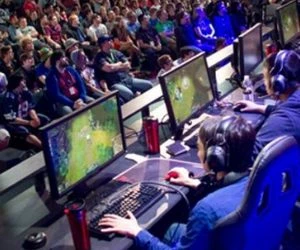In-play in eSports: is the time right?

Offering in-play betting on eSports is seen as a natural next step for operators, but Scott Longley says there are a number of issues that necessitate a cautious approach.
There are plenty of reasons to think that eSports and in-play betting would appear to be made for each other and a good starting point is with data. As is obvious, the games are played on computers, therefore they are the most data-rich sports that are out there.
But this in itself poses a quandary for betting operators looking at eSports from the point of view of already offering in-play betting on traditional sports.
When it comes to data, there really is such a concept as having too much of a good thing.
“eSports abide by a completely difference set of rules as compared to traditional sports, with multiple metrics of an ‘in-game lead’ such as gold accrued, kills, map positioning, team composition and many more,” says Anthony Werkman, head of marketing and operations at Betway. “Traders without an expert knowledge of eSports will be simply unable to trade in-play effectively.”
Werkman says this is particularly the case with multiplayer online battle arena (MOBA)-type games where the list of variables before a game has even started run into the thousands, and once a game is up and running they multiply exponentially from that point.
This is corroborated by James Watson, head of eSports at Sportradar, who points out that that the amount of relevant actions in games such as Dota2 or CS:GO is incredibly high. “If the best eSports gamers perform on average 200 to 300 actions per minute and there are 10 of them playing each game of Dota2 or CS:GO, one can see why some traditional ways of collecting data, such as scouting from streams or in-stadia, is just not fit for purpose.”
The task of modelling this is immense. RTSmunity is a Prague-based start-up that is hoping to bring in-play to eSports, but chief executive and founder Pavol Krasnovsky suggests it provides the biggest barrier to getting in-play right in eSports. “eSports is much more dynamic than traditional sports such as football or tennis, which means that probability reacts immediately to every decision made by players during the game,” he says. “This requires completely new approaches to the mathematical modelling and thinking out of the box.”
The task is further hampered by the time delays that occur with most eSports. All the public streams and the relevant data feeds are delayed by the tournament organisers, sometimes by as much 30 seconds. View that type of delay in terms of traditional sports such as football or tennis, and you can begin to see why the issue looms large for the operators.
Sportradar has signed a deal with ESL which brings it the real-time data which, Watson says, is critical to ensuring that its eSports offering provides a comprehensive pre-match markets offering but also the “low-hanging” in-play markets.
Harry Lang, marketing director at Pinnacle, says such deals will be central to helping provide the secure platform from which to build an in-play offering. “(In-play) is progressing but its development relies on the maturity of the organisational set-up of eSports events,” he says.
Watson from Sportradar says the company’s in-play offering is as yet a skeleton service. “You never jump in and offer 100-plus markets from day one,” says Watson. “You always start slow and build up over time.”
This slow build makes sense given the other dynamics that are affecting eSports currently. The first is integrity. The modelling needed to make in-play work – even with the time delays – will play a part in understanding the integrity threats that exist in eSports right now.
Says Krasnovsky: “As we collect more data from in-play, we have more information to analyse and thus detect potentially fixed matches. This is something that we are working on at the moment.”
A second tangential issue is the current furore surrounding skins betting. Of course, they are not directly related but operators will need to consider the potential for a backlash with regard to their services, particularly when it comes to the attitude of the world’s gambling regulators.
The issues around the ownership of skin sites and the reaction of publisher Valve – moving to close down skins betting via its APIs – are the type of issues that can unnerve an audience that isn’t attuned to scandal.
Watson draws a parallel with how TV initially struggled to strike the right one with eSports. “Back when ESPN were doing highlights back in 2007, it was dreadful,” he says. “They tried changing the format of the game to fit their broadcast formats and models. They didn’t respect the games and ecosystem as they were. It just didn’t work.”
In response the eSports community showed that it wasn’t afraid to criticise incomers that displayed a lack of knowledge. “If you don’t respect them as a community, then you will see a backlash,” he adds. “And because of the channels and platforms that they use and engage with, any reputational damage, whether to a game, or tournament, or broadcaster, or bookmaker, may well end up being unrepairable.”
The enthusiasm among operators to push in-play should perhaps be viewed in this light. The cautious approach to in-play has a lot going for it in a strategic sense but it also chimes with the attitudes of the most important stakeholders, the audience.
For instance, Watson from Sportradar questions whether there is an overwhelming enthusiasm for in-play among the current eSports audience. “A product is about having a market for it,” he says. “There is no doubt in-play will be part of the future, but there is nothing resembling a clamour. Clients should know that they aren’t missing out on a wave here. It should be softly-softly.”
What is already evident, though is a consumer desire for depth of coverage rather than any specific form of betting. So says Lang at Pinnacle: “One thing we quickly noticed when we offered eSports was that our customers were eager for more diversity and depth of offering. eSports, as an umbrella term, blends what are very distinct interests, so we quickly widened our offerings.”
Familiarity will come with time, suggests eSports consultant Mark McGuinness. “We are still at the very start of the demand curve,” he says suggesting that as the technology improves – and as the regulatory framework is built up – then in-play will become more accessible to the eSports mainstream.”
Part of the effort will come down to communication and education. Sportradar’s deal with ESL has seen the company conducting workshops with players, ostensibly to help educate with issues around integrity, but it also helps with the normalisation of betting generally.
Similarly, Werkman points out that Betway are always communicating with their customers in order to ensure they meet their needs and expectations. It takes manpower as much as modelling. “We made the decision to invest heavily in our eSports team – tripling our headcount in the past 12 months alone,” he says.
“Much like other sports, eSports audiences are starting to boost their enjoyment of game viewership through in-play betting and that upward trend will only continue as they become more familiar with in-play markets,” he concludes. “I believe we are on the cusp of an in-play revolution in eSports betting.”
For Watson, the process of communicating the right message about in-play starts with getting the offering right for Sportradar’s clients. “Our job is to balance the opportunities with the pitfalls”, he points out. “Where the best solutions possible are not good enough and put our clients at risk, we won’t lead them down that path.”
But he agrees with Werkman that the future in-play opportunity is tangible enough. “When the time is right and the opportunity is ripe, we will make sure that they can get the most out of this burgeoning opportunity,” he concludes.
